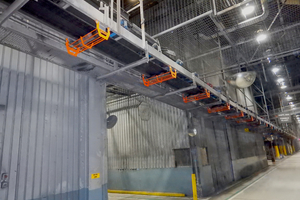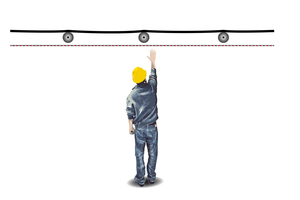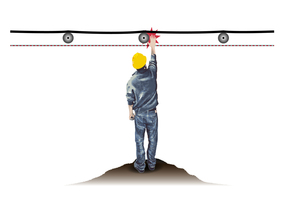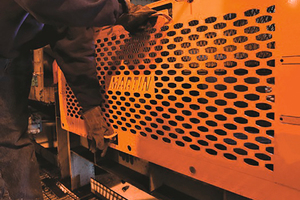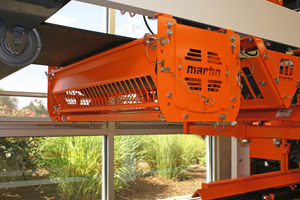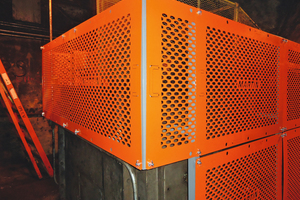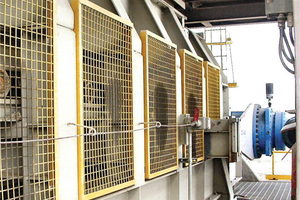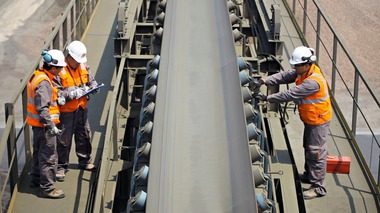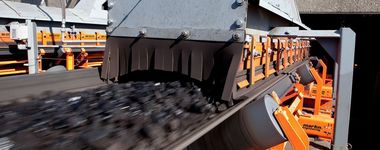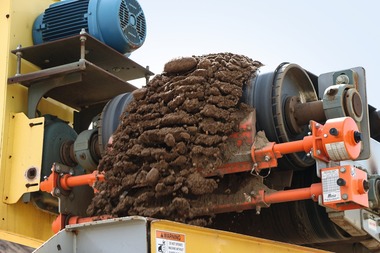A case for global standards in conveyor safety
Safety regulations are rarely arbitrary. They are generally based on a history of reported injuries and fatal accidents caused by a set of circumstances that both regulators and insurers deem dangerous enough to require explicit rules to prevent. However, rules can vary drastically between countries (and even within countries) to such an extent that the definition of what is safe and unsafe can appear subjective, and in some cases, can present more design and safety issues than the regulation is attempting to remedy. An example is the concept of “guarding by location.”
Most people readily accept that conveyors and other machinery require safety guards when positioned near workers or walkways. Guarding by location is the assumption that when hazards such as a moving conveyor belt are positioned beyond the normal reach of a worker, they don’t require a guard. Yet they can still present a serious hazard.
Hazards from above
By not requiring a physical barrier, guarding by location creates what can be considered an exception to the general requirements for the guarding of hazards in the workplace. For example, The American Society of Mechanical Engineers (ASME) B20.1-2015 Safety Standard for Conveyors and Related Equipment notes in section 5.9.2(a): Remoteness from frequent presence of public or employed personnel shall constitute guarding by location.
There are several hazardous locations that are beyond the normal reach of a worker when working or walking under or around elevated conveyors. These hazards are considered to be guarded by location, often found in or around nip points between the belt and return rollers or drive components such as pulley shafts, couplings, drive belts, gears and chains. Additional hazards from falling components may be inadvertently ignored if considered guarded by location.
Regulations and standards
Regulations usually stipulate the distance at which conventional barrier guards must be located. Some jurisdictions specify the hazard must be at least 2.1 m from the work surface or floor; other regulations require greater distances (Table 1).
Worker risks from ‘Guarding by Location’
By determining a general safe height for all locations, some workers may be safeguarded while others are not. Taller employees (1.82 m in height or more) can easily suffer an injury reaching up into a moving component that is 2.13 m above the ground. Working above machinery that is considered guarded by location exposes workers to increased severity of injury if they slip or fall to a lower level.
A fundamental problem for conveyor designers is the absence of specific global standards. Without uniform standards, equipment that is manufactured in one country to be installed in a second country may not be compliant for transfer or resale in a third country. The variation on standards from 2.1 to 3.5 m is too much to assure global compliance. The overall conclusion is that issues which allow or even encourage at-risk behaviors around conveyors – usually in order to maintain production or prevent equipment damage – are generally not negated by location or position.
Most regulations do not account for the potential buildup of spillage underneath the conveyor or in walkways, which can easily change the distance between the working surface and a hazard. It’s also fairly common practice to purposely collect a pile of material or fill a bin to gain access for service or inspection of an elevated component. Using tools and methods that extend a worker’s reach while the belt is running is a hazardous activity that can contribute to serious – and possibly fatal – accidents.
Guarding best practices
Exemptions such as guarding by location do not fully address the dangers explained above. As a result, rules defining the practice become ineffective as a safety measure, especially where belt conveyors are concerned. Despite its acceptance in various regulations, the practice of calling moving components on conveyors ‘guarded’ solely because their installation is at least a specific distance from the worker(s) is outdated as a concept and ineffective in application. It should be discontinued.
The logical solution is to simply install guards and baskets to protect workers from lateral and overhead hazards, while still offering safe and easy access. For maximum risk reduction, all nip points, shear points and moving or rotating components should be guarded, regardless of location or access. Many vendors can fabricate and supply guards of all types to fit virtually any application needed.
However, there is also no global standard for guard mesh sizes and mounting distance from the hazard. Most standards use a gauge to measure the distance which varies by mesh size. But these gauges were typically designed for the machine tool industry, where a worker is placing and removing workpieces from a machine. The use of the gauge is not necessarily appropriate for bulk material handling, where the purpose of guarding is to prevent inadvertent contact with a hazard. Most guarding standards allow alternate approaches if the reasons are documented through risk analysis.
The small mesh sizes required by the tool when a bulk material handling guard is placed relatively close to a hazard greatly reduces the ability to inspect components without removing the guard, thereby encouraging guard removal for routine inspections. It would be far better (and safer) to standardize on a few mesh sizes and mounting distances allowing maintenance workers to build guards to a short list of materials, using standard mounting distances and eliminating the use of the gauges. Table 2 shows the recommendation included in Martin Engineering’s book FOUNDATIONS for Conveyor Safety.
Put an end to the myth
Despite its nearly global acceptance as a concept in industrial safety, the practice of guarding by location remains a particular problem for overhead conveyor applications. It’s time to accept that as far as conveyors are concerned, ‘guarding by location’ is a myth. As such, it’s a concept that should be abandoned in order to make conveyors – and those who work on and around the equipment – safer.
Author:
R. Todd Swinderman, CEO Emeritus, Martin Engineering, Neponset/USA
R. Todd Swinderman joined Martin Engineering in 1979 as an Engineer in Conveyor Products, and has served as V.P. and General Manager, President and CEO, as well as Chief Technology Officer and Technical Director. He holds more than 140 active patents in 12 different countries. In his work with CEMA (the Conveyor Equipment Manufacturers’ Association) he has been instrumental in developing consistent standards to improve the safety and productivity of conveyor systems and components.
Other Author
Daniel Marshall, Product Specialist, Martin Engineering, Neponset/USA


